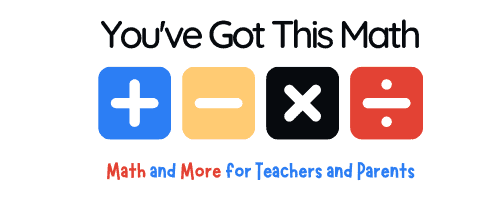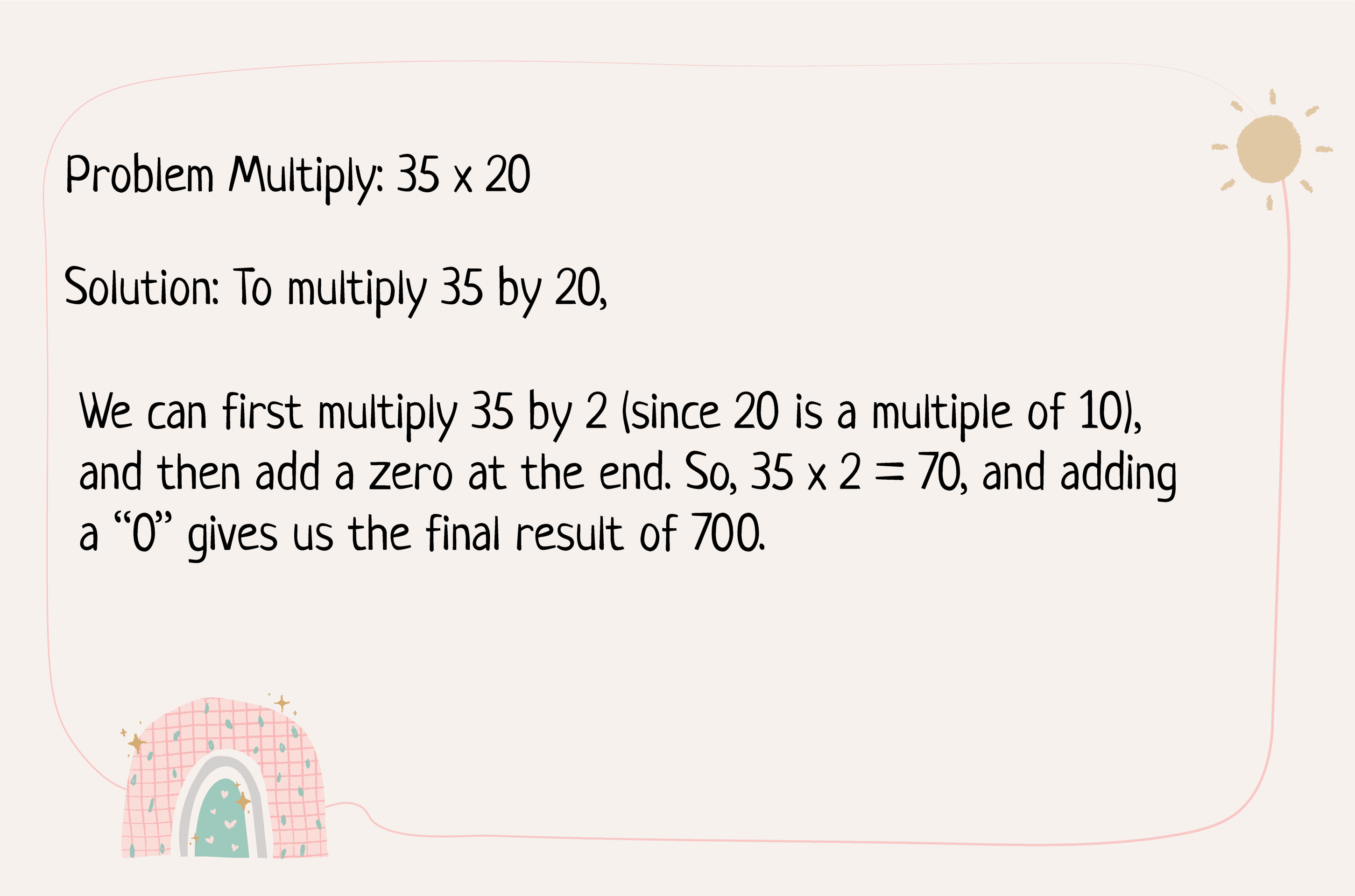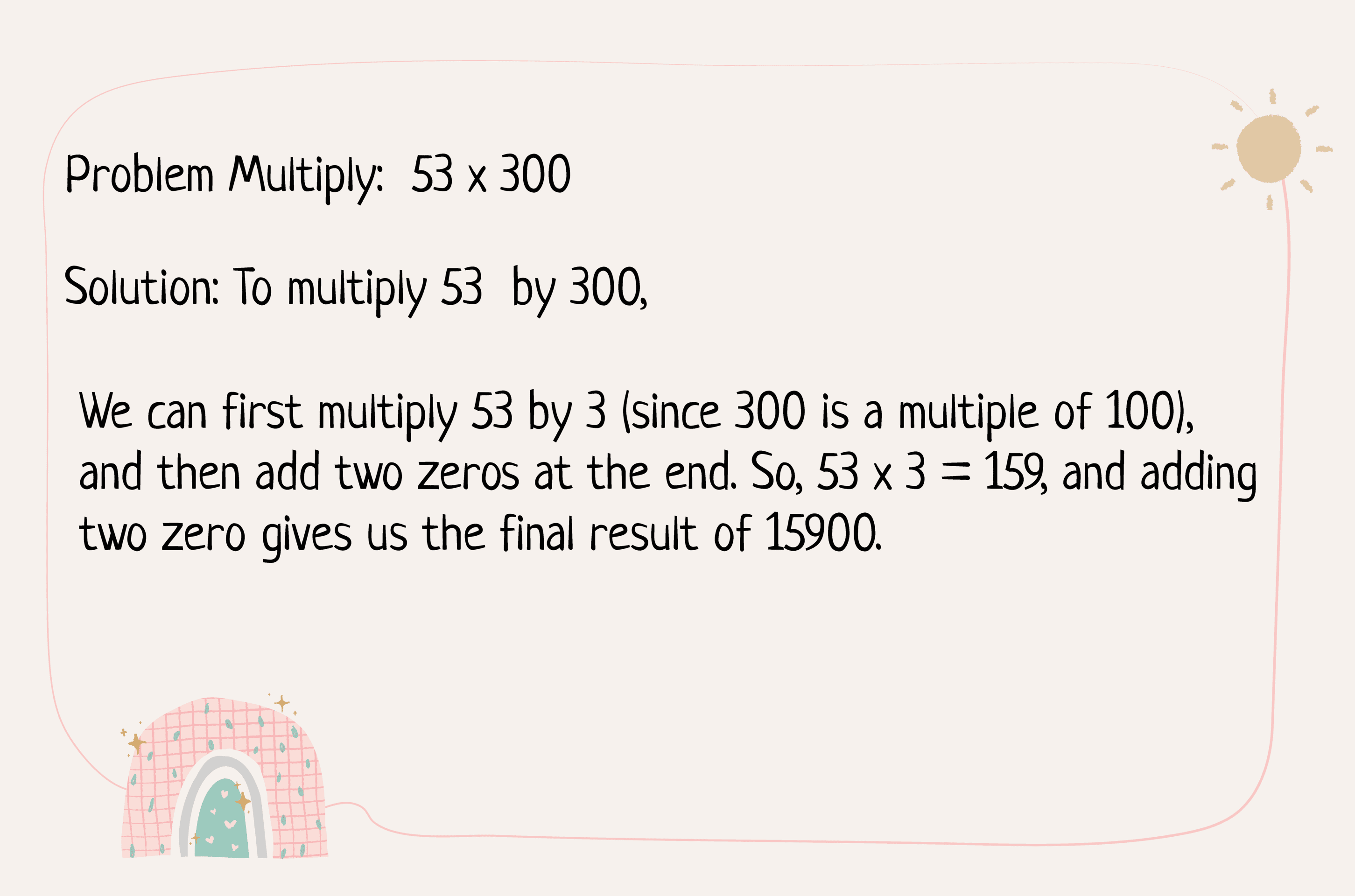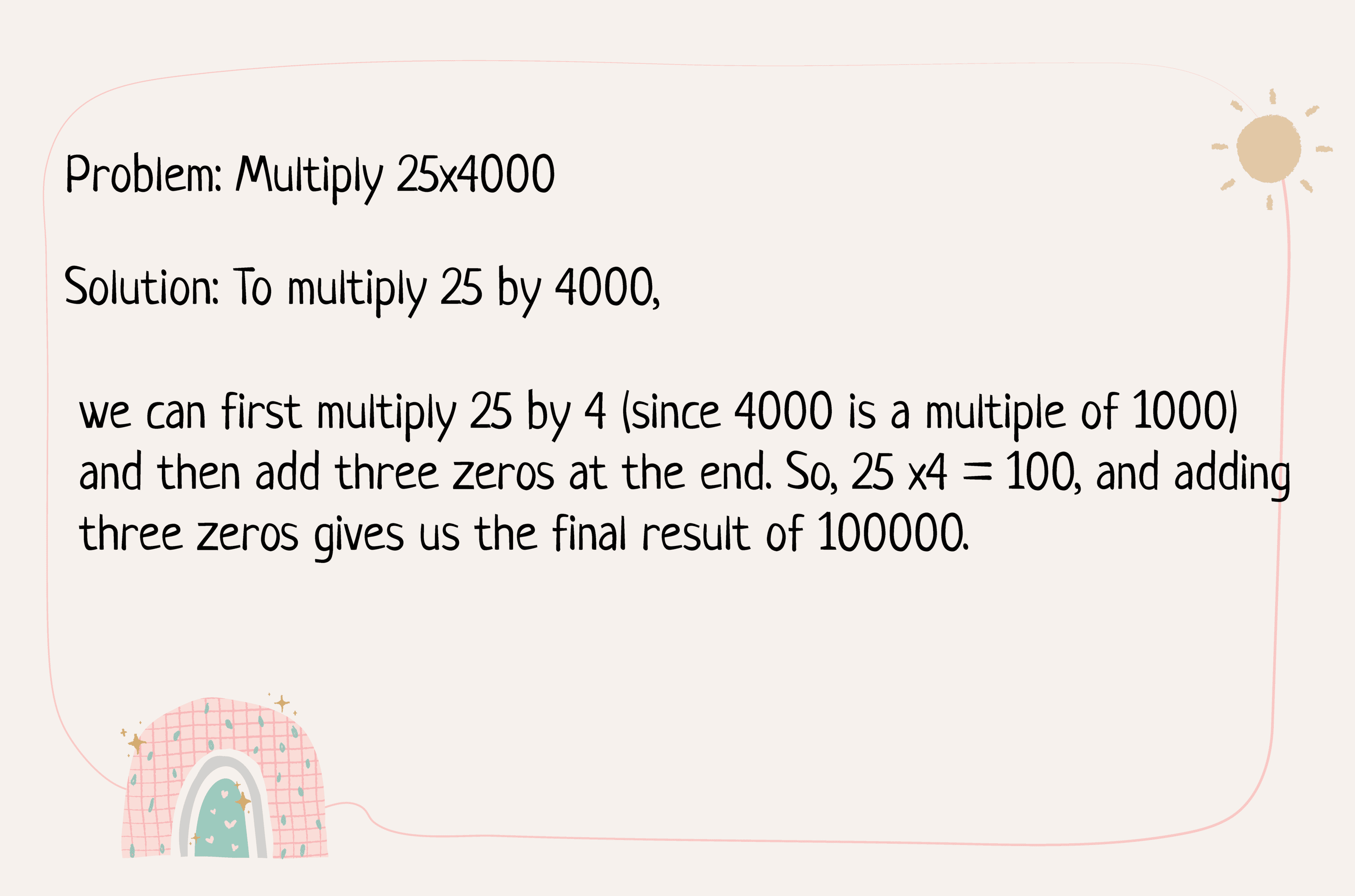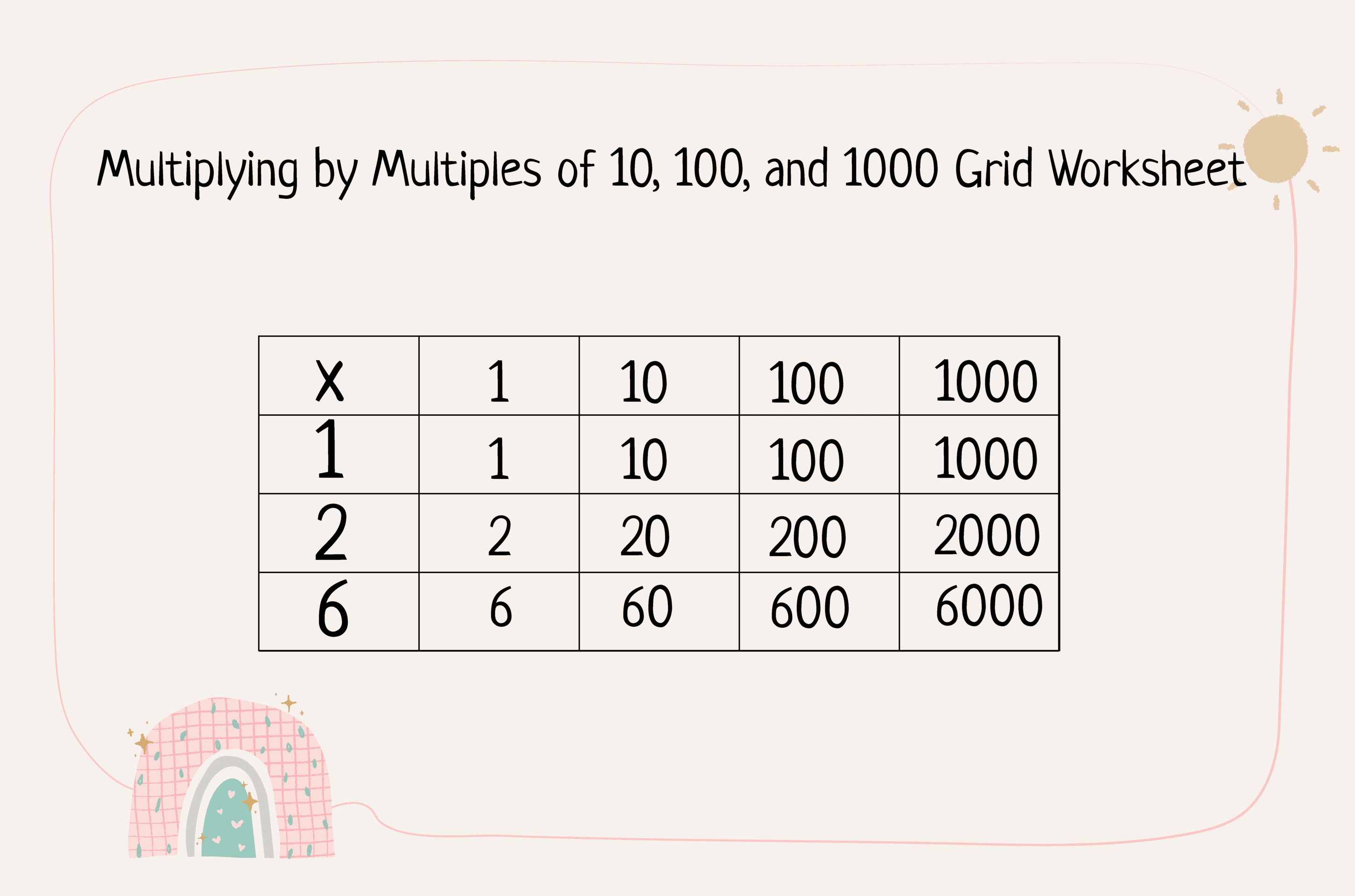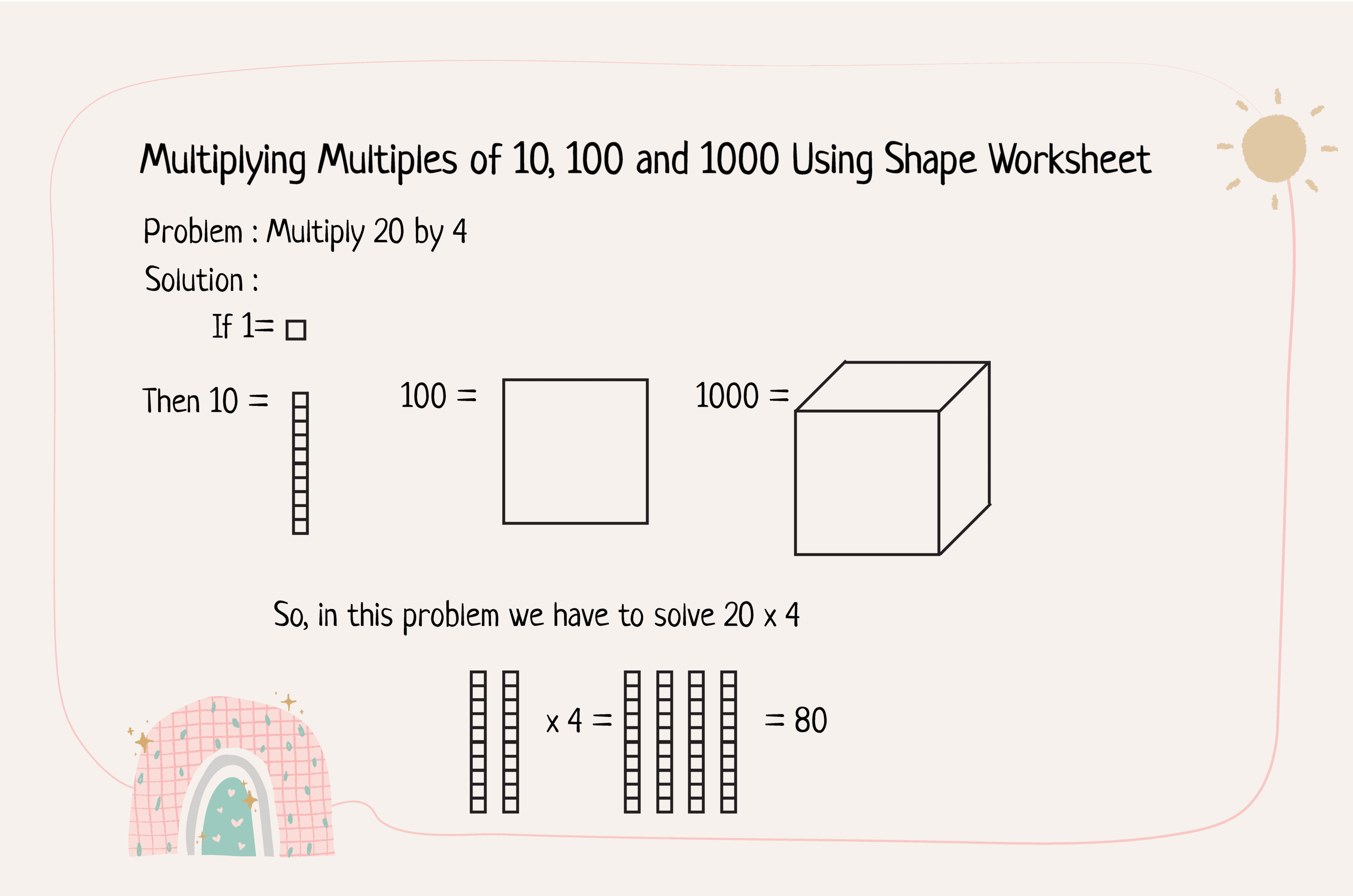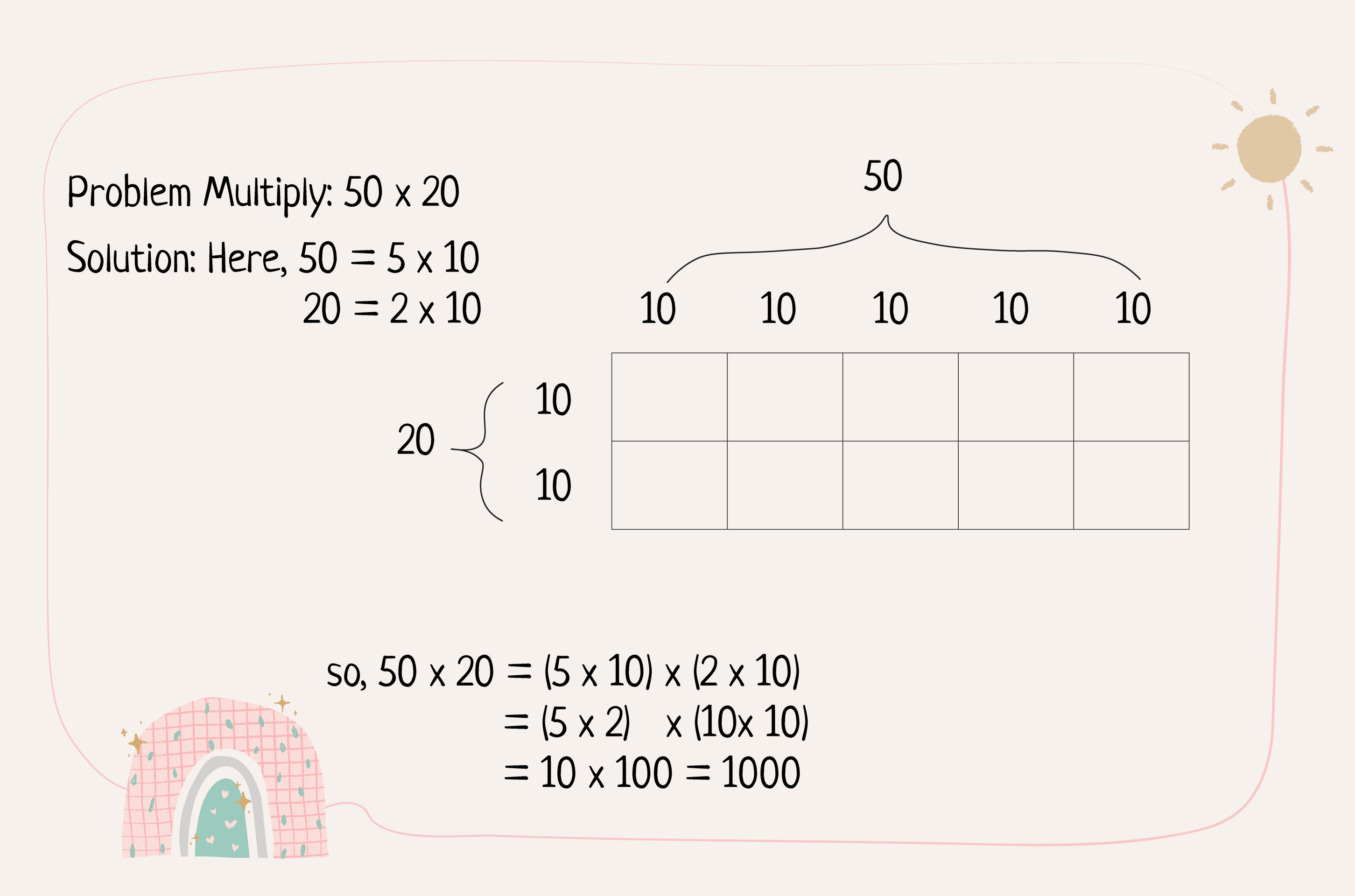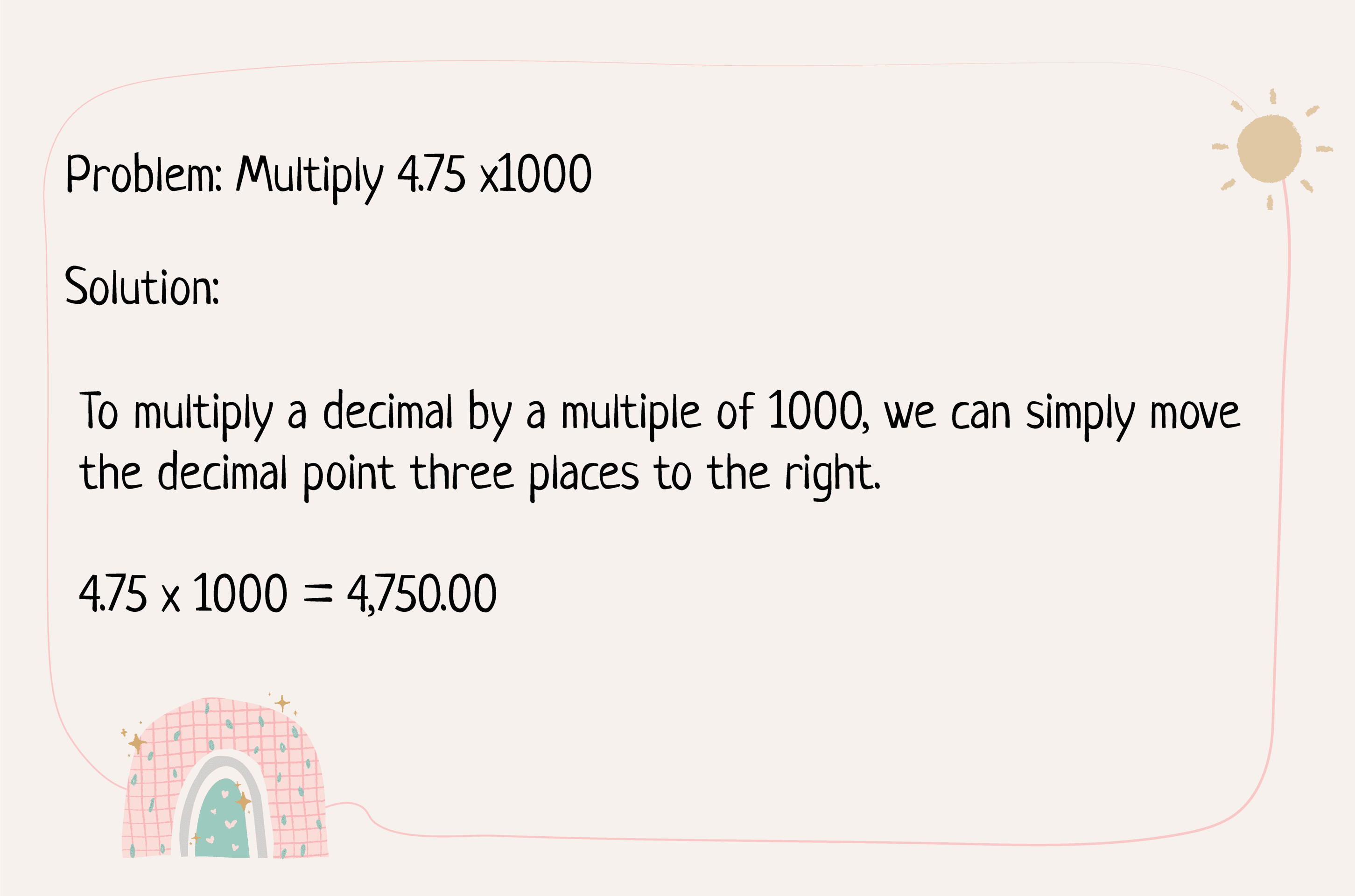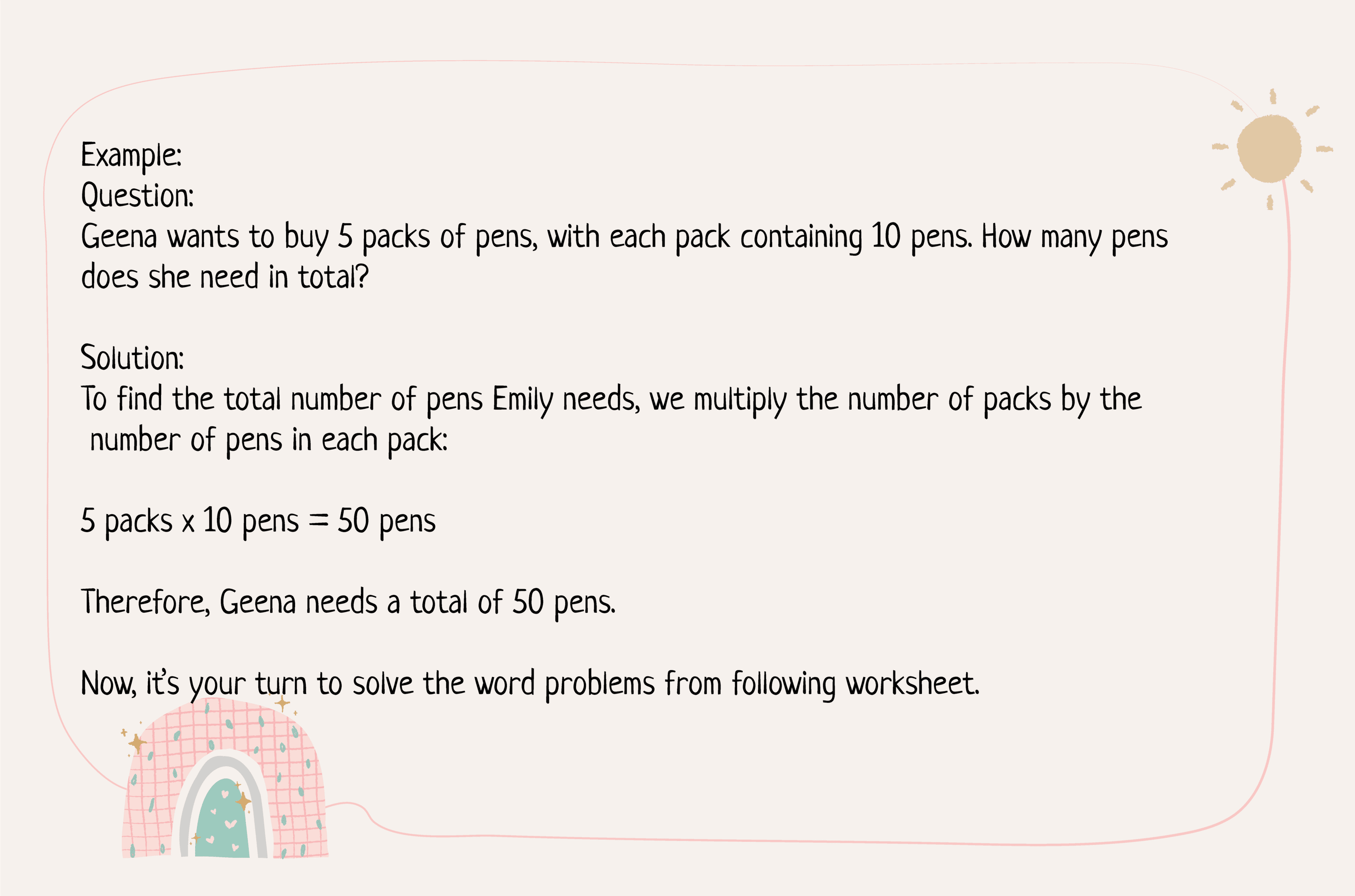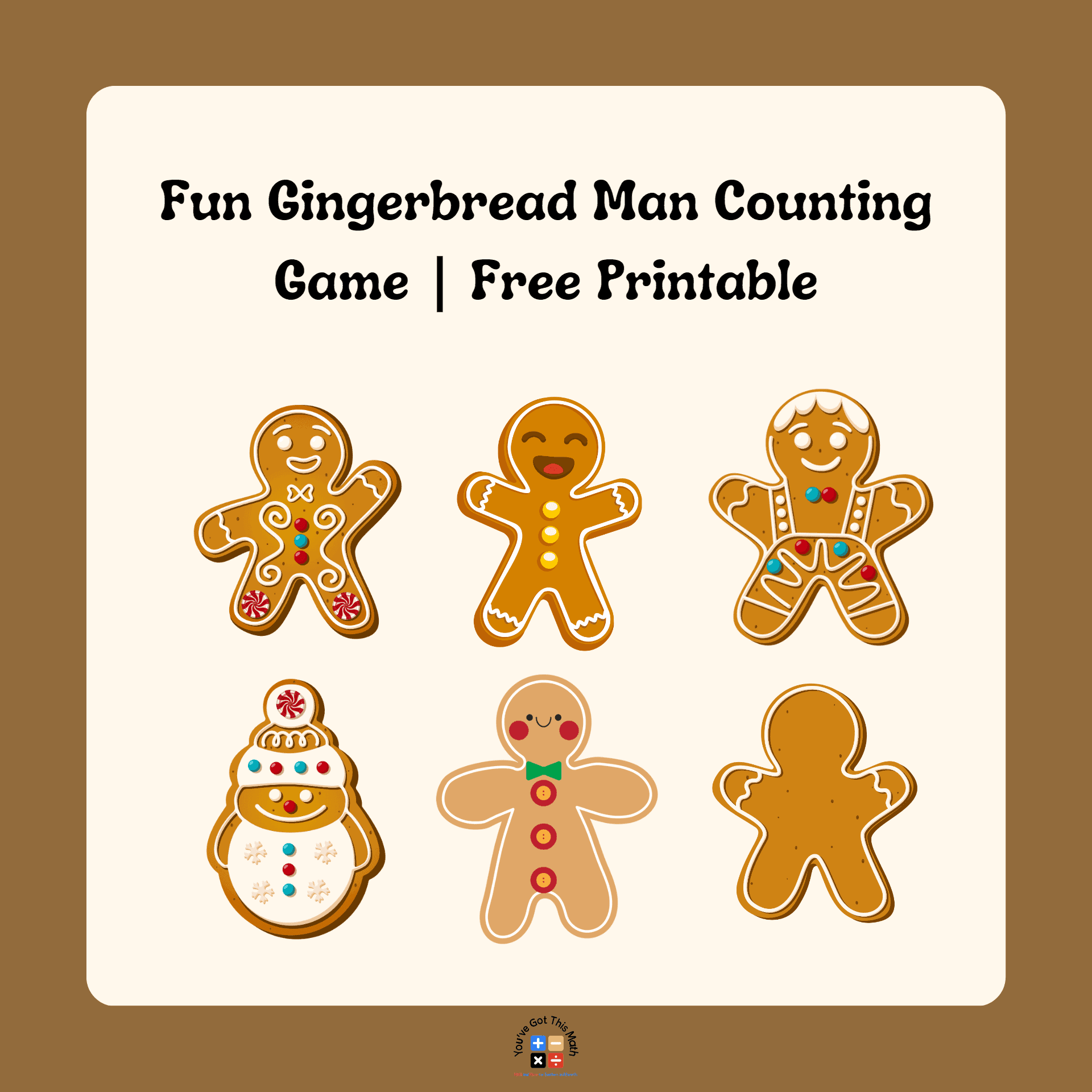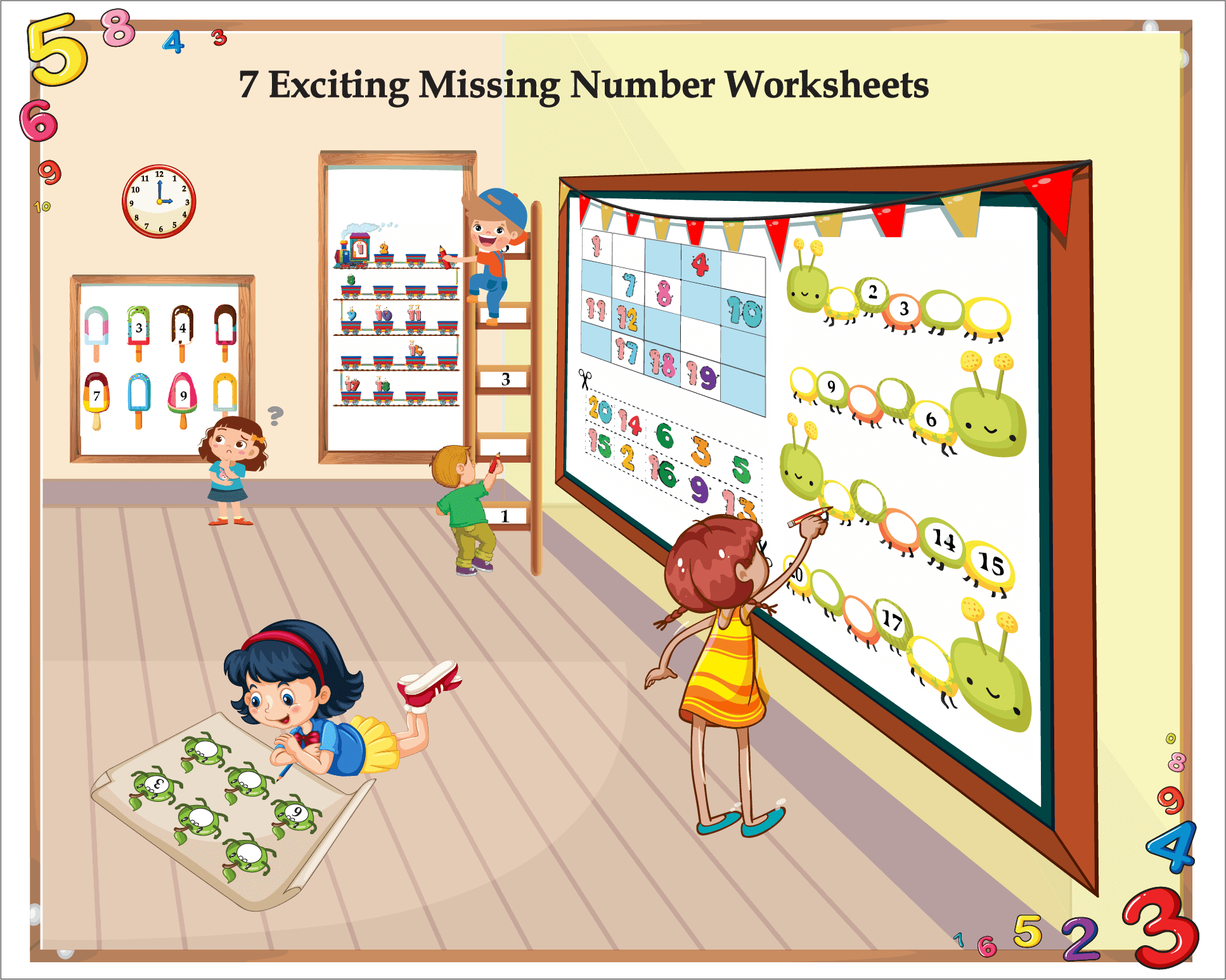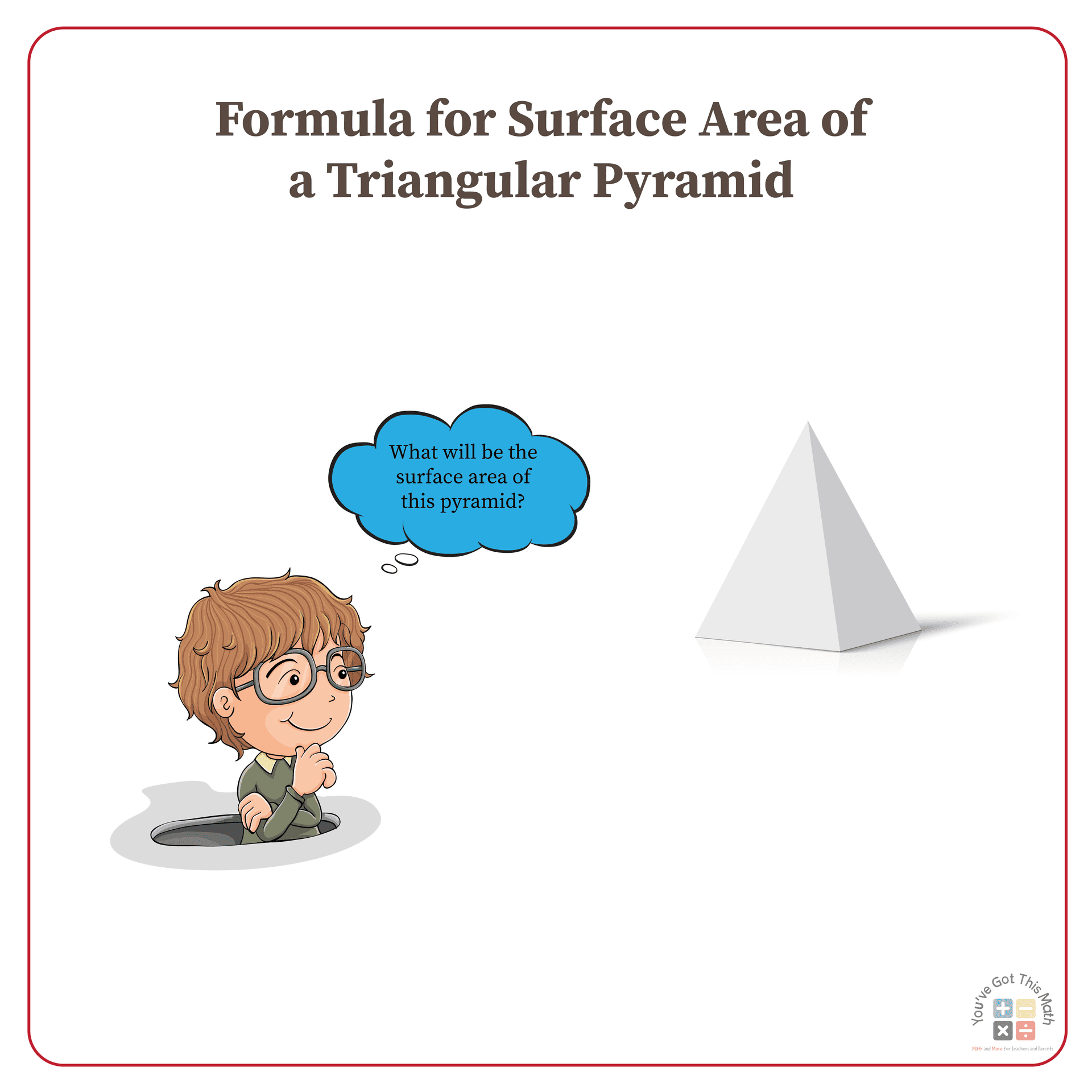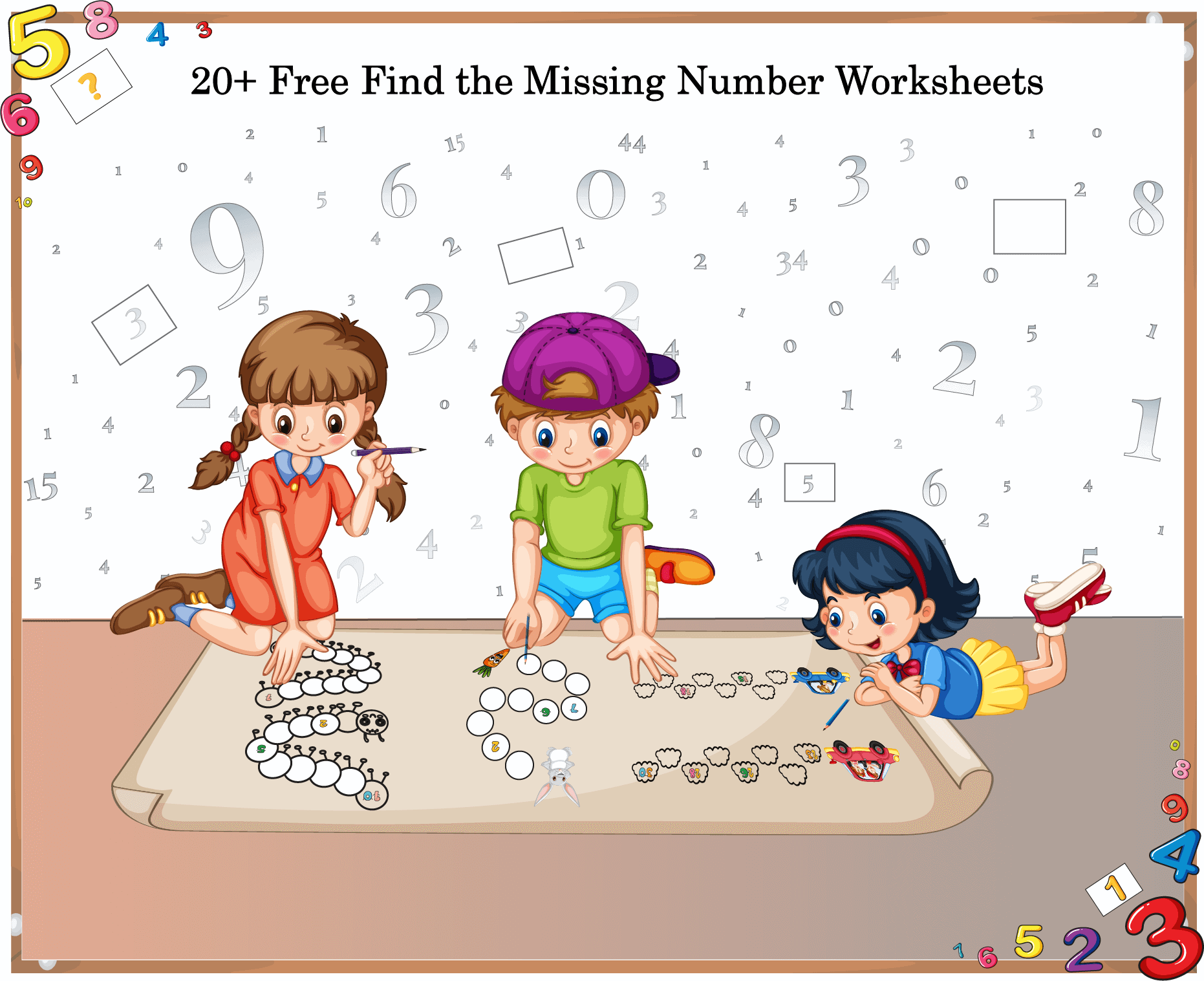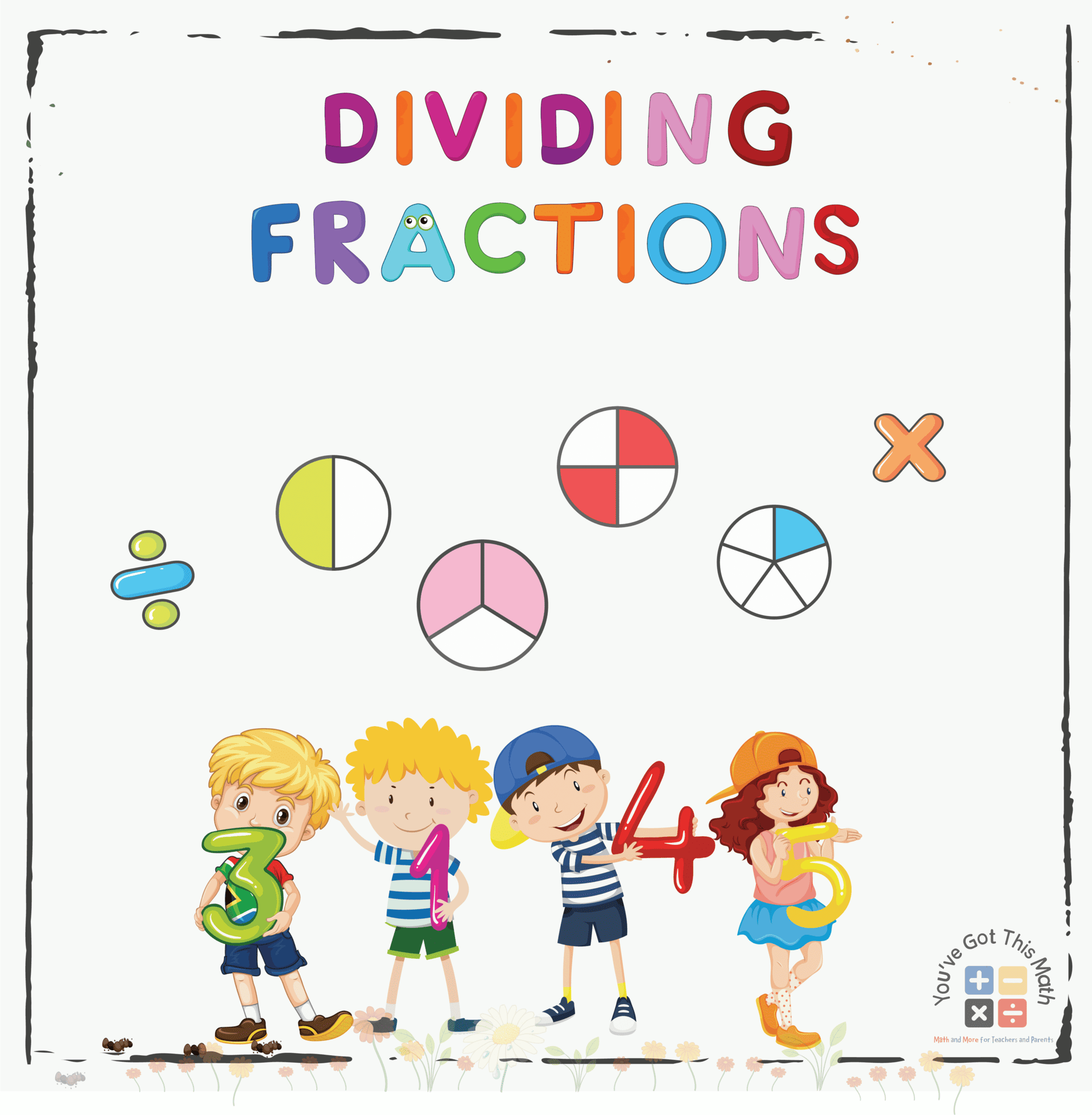8 Free Multiplying by Multiples of 10 100 and 1000 Worksheet
Buy 2700+ Pages Math Games & Activities (PreK-2nd Grade)
These multiplying by multiples of 10 100 and 1000 worksheet will help to visualize and understand the multiplication process by different multiples of 10, 100, and 1000. 3rd to 5th-grade students will learn multiplication methods with multiples of 10, 100, and 1000 and can improve their basic math skills with our free printable interactive worksheets.
8 Exciting Multiplying by Multiples of 10 100 and 1000 Worksheet
Please download the following recognising multiples of 10 100 and 1000 worksheet and practice multiplication on the pages.
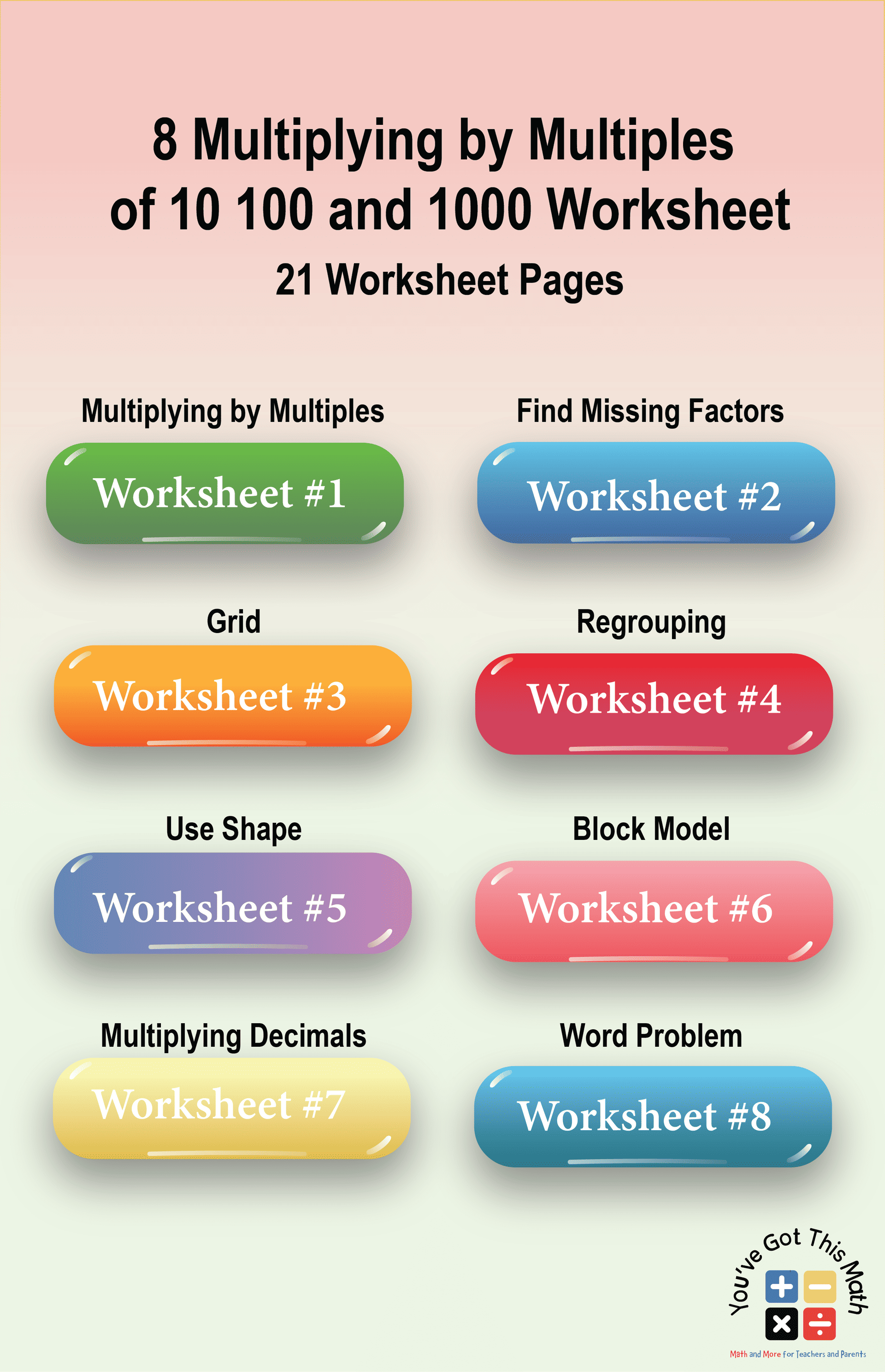
Benefits of Learning Multiplying by Multiples of 10 100 and 1000 Worksheet
Let’s explore the numerous benefits of learning to multiply by multiples of 10, 100, and 1000 worksheets:
-
Multiplying by multiples of 10, 100, and 1000 allows you to improve your mental calculations. Just imagine being able to compute 400 x 50 or 6700 x 500 in your head within seconds! Crazy right? This skill not only saves time but also strengthens your overall numerical fluency.
- It helps with practical applications in daily life. This skill is widely used in everyday scenarios from calculating prices and discounts.
- By understanding the effects of multiplying by these magnitudes, you become an expert at dealing with large quantities or estimating outcomes without performing detailed calculations.
- Multiplying by multiples of 10, 100, and 1000 serves as an important stepping stone for more advanced mathematical concepts. By learning this, you will unlock the vast possibilities of multiplication, enabling you to solve many complex problems with ease and confidence.
Multiplying by Multiples of 10, 100, and 1000
This activity refers to the process of performing multiplication operations between a 2-digit number and a multiple of 10. So, a multiple of 10 refers to any number that can be obtained by multiplying 10 by a whole number. When multiplying a two-digit number by a multiple of 10, the answer can be found by first multiplying the two-digit number by the multiple of 10’s whole number, and then adding the necessary number of zeros.
Let’s see an example.
Problem Multiply: 35 x 20
Solution: To multiply 35 by 20, we can first multiply 35 by 2 (since 20 is a multiple of 10), and then add a zero at the end. So, 35 x 2 = 70, and adding a zero gives us the final result of 700.
Now, Let’s practice some exercises.
You can find more exercises on Multiplying by Multiples of 10 with 2-Digit Numbers from another article on our site.
Now, after finishing the above discussion, let’s progress on performing multiplication operations between a 3-digit number and a multiple of 100. So, a multiple of 100 refers to any number that can be obtained by multiplying 100 by a whole number. When multiplying a three-digit number by a multiple of 100, the answer can be found by first multiplying the three-digit number by the multiple of 100’s whole number, and then adding the necessary number of zeros.
Let’s see an example.
Problem Multiply: 53 x 300
Solution: To multiply 53 by 300, we can first multiply 53 by 3 (since 300 is a multiple of 100), and then add two zeros at the end. So, 53 x 3 = 159, and adding two zeros gives us the final result of 15900.
Now, let’s engage in some practice sessions.
Again, we will see the process of performing multiplication operations between a 4-digit number and a multiple of 1000. So, a multiple of 1000 refers to any number that can be obtained by multiplying 1000 by a whole number. When multiplying a two-digit number by a multiple of 1000, the answer can be found by first multiplying the two-digit number by the multiple of 1000’s whole number, and then adding the necessary number of zeros.
Let’s see an example.
Problem Multiply: 25×4000
Solution: To multiply 25 by 4000, we can first multiply 25 by 4 (since 4000 is a multiple of 1000), and then add three zeros at the end. So, 25 x4 = 100, and adding three zeros gives us the final result of 100000.
Now, let’s work on some exercises to enhance your skills.
To test your understanding regarding multiplying by multiples of 10, 100, and 1000 worksheets you have to practice more and more, So all the best little champ!
Find Missing Factors of Multiples of 10, 100, and 1000
This activity will strengthen your understanding of the relationship between factors and multiples. This worksheet has been designed with interactive and challenging exercises providing a stimulating learning experience while reinforcing essential math concepts.
Here’s an example.
Question:
Fill in the missing factor: 40 x ___ = 400
Solution:
To find the missing factor, we need to determine what number, when multiplied by 10, equals 100. In this case, the missing factor is 10, as 40 x 10 = 400.
Let’s dive into a set of practice problems.
Multiplying by Multiples of 10, 100, and 1000 within Grid
In this activity, you will perform multiplication within grid. Within the grid, you’ll encounter a range of multiplication problems where the factors are multiples of 10, 100, or 1000. Let’s see an example below:
Now, let’s tackle some exercises to strengthen your abilities.
Multiplying Multiples of 10, 100, and 1000 Using Regrouping
This worksheet is designed to sharpen your multiplication skills while exploring the concept of regrouping with multiples of 10, 100, and 1000. You will gain a proper understanding of the link between place value and multiplication.
Let’s clarify the concept with an example:
Question:
Multiply 15 x 40
Solution:
15×40 = 15x 4 tens = 60 tens = 600
Now, let’s engage in some practice sessions.
Multiplying Multiples of 10, 100, and 1000 Using Shape
This activity combines mathematical concepts with visual representation, allowing you to explore the world of multiplication through shapes. By assigning specific values to each shape, you’ll discover the power of multiplying multiples of 10, 100, and 1000.
Let’s see an example of this process.
Now, let’s dive into a set of practice problems.
Multiplying Multiples of 10, 100, and 1000 Applying Block Model
This interactive worksheet introduces a block modeling approach to multiplication where each block represents a multiple of 10, 100, or 1000. Let’s see an example of this process.
Now, let’s engage in some practice sessions.
Multiplying Decimals by Multiples of 10, 100, and 1000
In this worksheet, we will introduce some exciting realms of multiplying decimals by multiples of 10, 100, and 1000. Get ready to sharpen your decimal multiplication skills and discover the fascinating patterns that emerge when we multiply decimals by these special multiples.
Question:
Multiply: 4.75 x 1000
Solution:
To multiply a decimal by a multiple of 1000, we can simply move the decimal point three places to the right. 4.75 x 1000 = 4,750.00 So, the product of 4.75 multiplied by 1000 is 4,750.00.
Now, let’s dive into a set of practice problems.
Multiplying by Multiples of 10, 100, and 1000 Word Problems
Now, we will explore the fascinating concept of multiplying by multiples of 10, 100, and 1000 within real-life scenarios. By the end of this exercise, you will be able to apply multiplication to practical situations.
Now, it’s your turn to solve the word problems from the following worksheet.
Download the Worksheet PDF
Download the following combined PDF and enjoy your practice session.
So today, we’ve discussed some multiples of 10 100 and 1000 worksheet using the concepts of single-digit, double, and multi-digit multiplication, finding missing factors, multiplication within grid, multiplication using regrouping, using shape, block models, multiplying decimals some interactive comparison, finding missing factors, and word problems. Download our free worksheets and after practicing these worksheets, the students will surely improve their mathematical skills and have a better understanding of multiplying by 10, 100, and 1000.

Hello! I’m Shamma Tabassum, a Content Developer and Graphic Designer currently working at Softeko. I hold a degree in Architecture from RUET. Throughout my academic journey, I’ve come to view design as a collaborative process rather than something that materializes out of thin air.
Over time, I’ve honed my ability to effectively communicate specific ideas to viewers through my designs and graphical illustrations. I’m always eager to exceed expectations and find innovative ways to present mathematical solutions through out-of-the-ordinary presentations and design.
